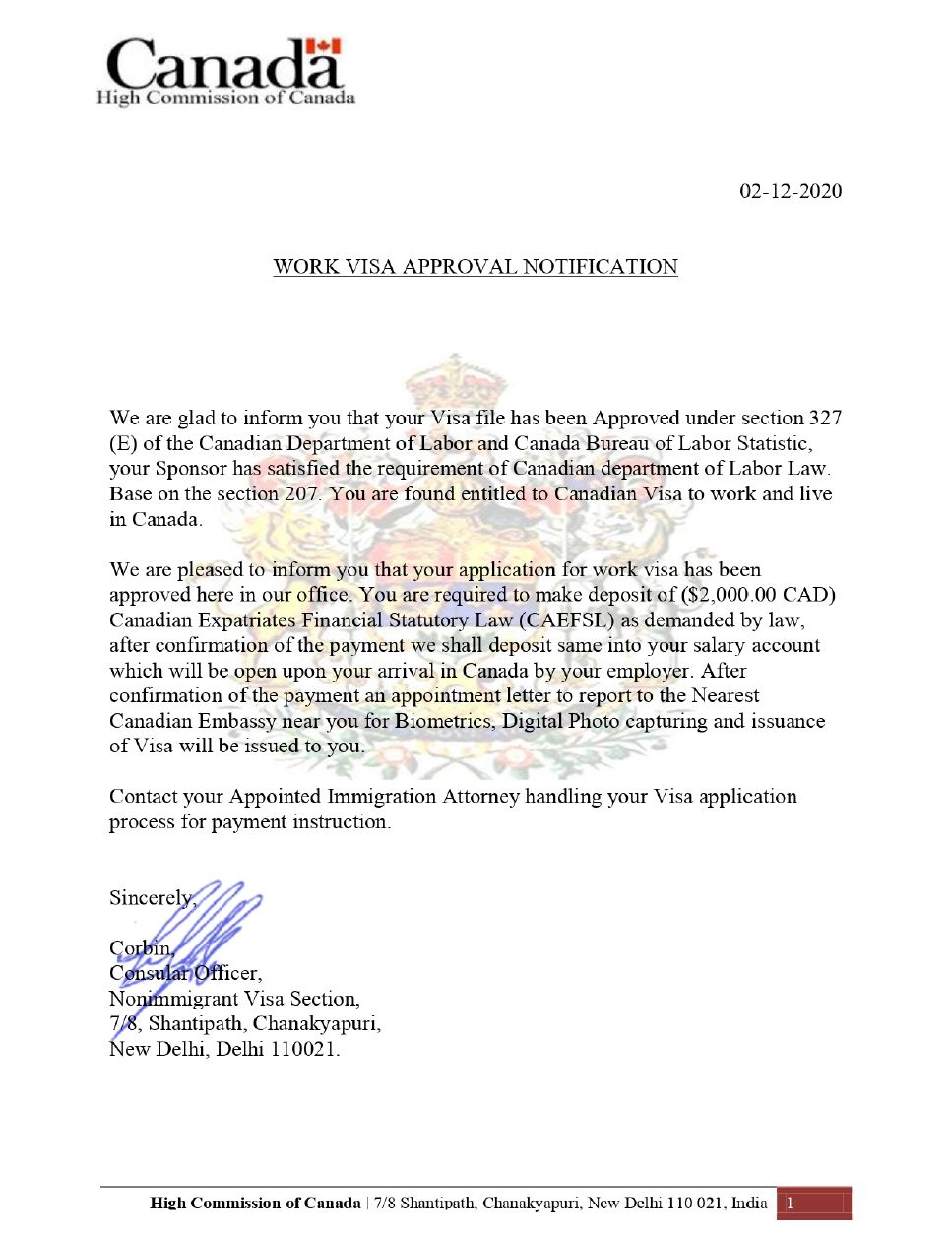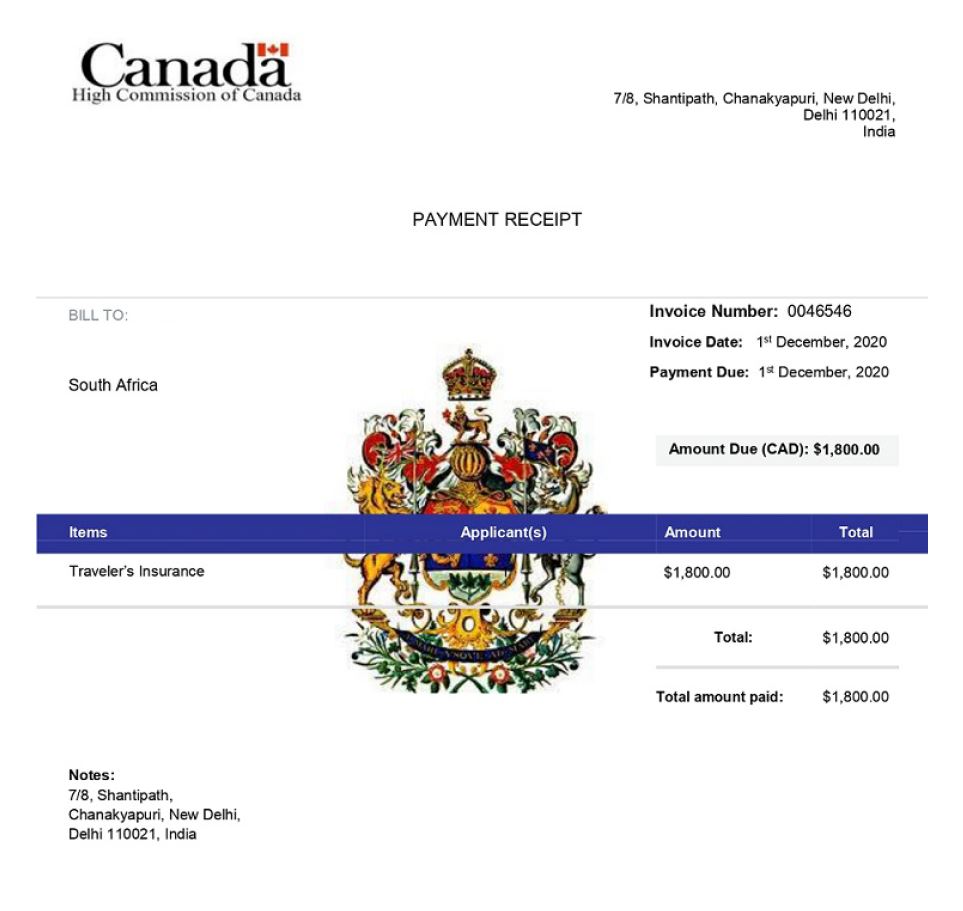How to spot a Canadian immigration job scam


With many individuals requiring a job offer in order to move to Canada, the number of Canadian immigration job scams has increased significantly. That is why we have compiled a list of tips on how to spot a Canadian immigration job scam. You can also watch our video on these tips here.
These Canadian immigration job scams involve offering individuals a fake job offer and then requesting money from them to process the Canadian work permit. There are several things to look for on any job offer that you receive that will tip you off it is a legitimate job offer or if it is a Canadian immigration job scam. These tips can be used for any job offer, not just those in Canada as many of these scammers use the same online job scams for Canada, the USA, the UK, and Australia. Below is an example of one of these fake job approvals.

How did you find the job?
If you do not remember applying to the job, or you have been approached by a company directly without applying, this could be a red flag. With recent scams, “recruiters” are reaching out to people through LinkedIn messages to let them know that they have a job for them to apply to. If you have also posted your CV online on various websites, scammers may find your CV and contact you via e-mail directly as well.
Check the e-mail address they are using
Many scams out there have gotten quite good at tricking people into thinking they are legitimate. Always look at the domain part of the e-mail address to see if it is a Gmail, Hotmail, Yahoo, or other public e-mail address. Some scams will try to copy the legitimate e-mail address of the company they are mimicking by using the legitimate e-mail address in the front part of their e-mail address. For example, the latest scam that we saw was using KPMG’s name. Instead of the e-mail address being careers@kpmg.com the scam e-mail was career@kpmgjob.com . Also, for any e-mail that is stated to be coming from the Canadian government, the e-mail address will typically end in international.gc.ca. The latest scam used the e-mail address international.gc.ca@visadepts.com. It is easy to see how these e-mail addresses may seem legitimate at first glance as they are not using generic Gmail e-mail addresses, but have created more elaborate e-mail addresses.
The latest scam that we saw stated that they were reaching out from the High Commission of Canada in India, but their name on the e-mail address was “BRITISH HIGH COMMISSION (NEW DELHI).” Remember that many of these scammers use the same online job scams for multiple countries, so you may notice elements from other countries on these fraudulent documents.

Conduct online research
If the job offer seems too good to be true, do a Google search on the job offer to see if anyone else has reported that it is a scam. You can also go to the employer’s official website to see if they have posted any warning about ongoing scams using their company name. If nothing has been posted, you can also submit a query to the company directly to see if the job offer came from them. Some Canadian embassies and High Commissions also post about recent job scams that they have been made aware of.
Ask about a Labour Market Impact Assessment (LMIA)
Once you receive the job offer, ask the employer if they have a positive Labour Market Impact Assessment (LMIA) for your job, or if they are exempt from requiring one. A Labour Market Impact Assessment (LMIA) is required for most jobs to show that the employer first tried to hire a Canadian before a foreign national. If they say that your job is exempt from requiring a Labour Market Impact Assessment, you can verify this by looking at the current LMIA exemptions here.
Learn about government communications
The government of Canada will not contact you directly to assist you with your work permit application. The Canadian government will also not e-mail you directly asking you to make payment for your application upfront. Applications are submitted online through the Canadian government website, and payments are made online through your portal, or in some cases, you may need to make additional payments, which will be done online through the Canadian government’s official website.
If you think you may have received a Canada job offer scam and would like to find the official e-mail address of a Canadian embassy or high commission, you can look it up here: https://www.canada.ca/en/immigration-refugees-citizenship/corporate/contact-ircc/offices/international-visa-offices.html
Another red flag that we have seen is that the “Canadian High Commission of Canada” in India has contacted people to complete their work permits when they are in other countries outside of India such as Nigeria and South Africa. This would be unusual as these applications would typically be processed by your local embassy or high commission.
Some of these scams send individuals an official-looking form for their travel insurance. They are asked to complete this form and make the required payment. Canada does not require you to have traveler’s insurance from the Canadian Insurance Company. Below is an example of this fake form. You may also notice that even though this form is supposed to be for Canada, it has the United Kingdom coat of arms on it.

Fake invoices and receipts
The government of Canada does not issue invoices. Since payments are all done through their website, you will not receive an invoice. you will, however, receive a receipt once you have made payment. The receipt will have a barcode on it as well as your credit card details and the name of the credit card holder on it. In some cases, if you did not pay enough fees with your application, you may receive a request to pay your missing fees (such as an additional $85 for bi0mterics) through the Canadian government’s official website. This request will usually come through your Canadian government online account.
Below is an example of one of these fake invoices/receipts.

Method of payment
Payments to the Canadian government are done online via credit card. You will never be asked to pay via Money Gram, Western Union, or any other money transfer method. Some fees can be paid in person at an official Canadian Visa Application Centre when submitting your application.
Threats and bullying
If you find that the “employer” or the “government” official start to threaten you or begin bullying you, this should be a red flag. Any employer who genuinely wants to hire you will not be offended if you ask clarifying questions to ensure the job offer is legitimate. the Canadian government will also not threaten you or bully you for asking clarifying questions to ensure you are not being scammed.


